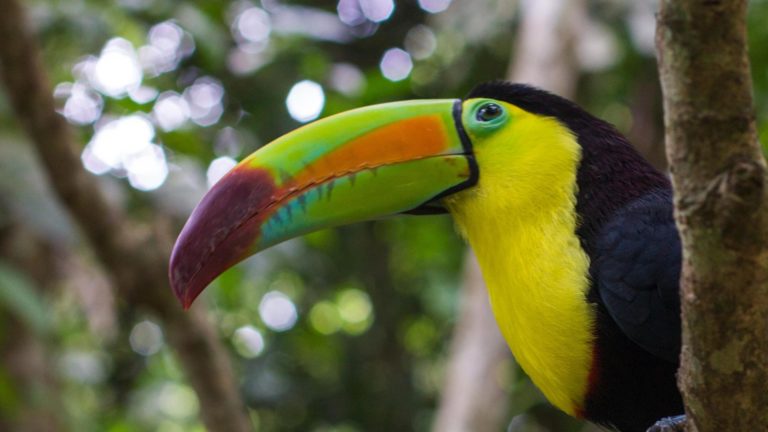Keel-billed Toucan Ramphastos sulfuratus
Taxonomy
Scientific name:
Ramphastos sulfuratus
Family:
Ramphastidae
Genus:
Ramphastos
Species:
Sulfuratus
Common names:
Kell-billed toucan
Biology
Morphology:
The plumage is mostly black, except for the yellow-green face, the bright yellow throat and cheeks, vibrant red undertail feathers and white rump. Keel-billed toucans have a bill that can grow to be up to one third the size of their body. The beak is mostly greenish yellow, except for an orange patch on each side and yellow markings on top and a yellow tip. The upper beak is more extensively red tipped than the lower beak, where some of the red is replaced by blue. The beak is edged with tooth-like ridges.
Reproduction:
Keel-billed toucans are monogamous. They nest in natural or woodpecker-made cavities in trees. A female toucan lays between 1 to 4 eggs. The eggs are incubated by both parents in 16 to 20 days. The chicks remain in the nest for 8 to 9 weeks so that their beaks may fully form.
Diet:
Mainly composed of a variety of forest fruits but occasionally eats small animals (like frogs) and eggs when available.
Ecology
Range:
From southern Mexico through Central America to north of Colombia and northeast Venezuela.
Habitat:
They inhabit humid, open rainforests and second growth woodland areas usually along rivers and streams.
Threats
Deforestation and trafficking for the pet trade. IUCN Red List: Least concern.

